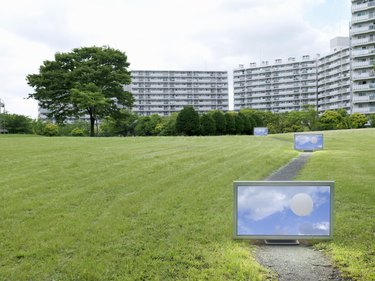
You sit down to watch your favorite movie on your LCD television, only to see the images on your screen take on a jerky effect. You could have an improperly connected cable between your video source and your TV, or it could be the set itself causing this problem, which is called "judder" effect.
Ruling out Equipment Problems
Video of the Day
If you're having problems with a jerky picture on your LCD TV, the first step is to rule out equipment problems. This means checking for everything from a frayed, crimped or otherwise damaged cable to an obstruction of your home's satellite dish. Any time that the signal between the source -- such as the cable company or a satellite -- is compromised, it can lead to picture deficiencies like choppy images on your screen.
Video of the Day
Judder Effect
Once you've ruled out cable, satellite, receiver or other equipment problems, it's time to consider an issue known as judder effect. Most basic LCD TVs broadcast images at a refresh rate of 60 hertz; in other words, the TV displays 60 frames per second. Most movie studios, however, shoot on film that rolls at 24 frames per second. When your LCD TV tries to play back a movie that was shot at 24 frames per second, it must convert the source material to playback at the faster 60 frame per second speed in a process known as 2-to-3 pulldown. This literally slows down each frame, making the resulting video look choppy instead of smooth.
Anti-Judder Technology
Several LCD TV manufacturers -- including Sony, Sharp and Toshiba -- use anti-judder technology to reduce the jerky effects of 2-to-3 pulldown conversion. Sony calls this technology Motion Flow, while competitor Samsung calls it Movie Plus. The general industry-wide term for this is "smoothing" technology because it literally smooths out the picture to reduce the jerking. Smoothing technology is often combined with higher refresh rates in LCD TVs. In this manner, the TV uses the data sent from the video source to create additional frames of video.
Downside of Smoothing
While anti-judder -- or smoothing -- technology reduces the jerking of some LCD TVs when playing film-based media, not everyone who tries it is a fan. Smoothing technology often works too well, eliminating the film-like quality of movies and making them look more like video. When journalists at technology review site Cnet compared the smoothing feature on one of Sony's LCD TVs, they found the high anti-judder setting actually introduced small glitches into the original picture where there were none before.